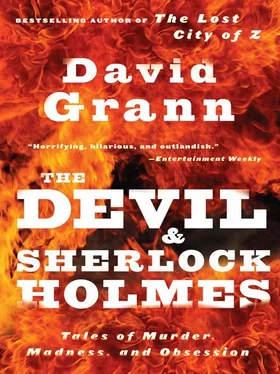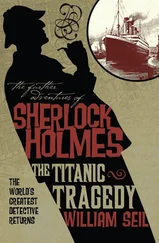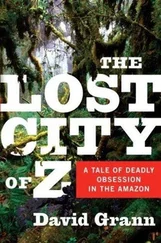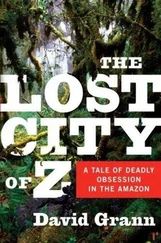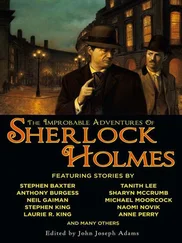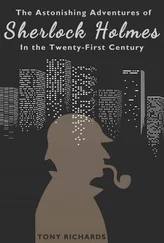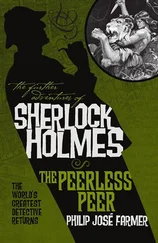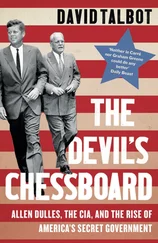When fire investigators examined the scene, they found the classic signs of arson: low burns along the walls and floors, pour patterns and puddle configurations, and a burn trailer running from the living room into the hallway. Lewis claimed that the fire had started accidentally, on a couch in the living room—his son had been playing with matches. But a V-shaped pattern by one of the doors suggested that the fire had originated elsewhere. Some witnesses told authorities that Lewis seemed too calm during the fire and had never tried to get help. According to the Los Angeles Times , Lewis had previously been arrested for abusing his wife, who had taken out a restraining order against him. After a chemist said that he had detected the presence of gasoline on Lewis’s clothing and shoes, a report by the sheriff’s office concluded, “The fire was started as a result of a petroleum product being poured on the front porch, foyer, living room, stairwell and second floor bedroom.” Lewis was arrested and charged with six counts of murder. He faced the death penalty.
Subsequent tests, however, revealed that the laboratory identification of gasoline was wrong. Moreover, a local news television camera had captured Lewis in a clearly agitated state at the scene of the fire, and investigators discovered that at one point he had jumped in front of a moving car, asking the driver to call the Fire Department.
Seeking to bolster their theory of the crime, prosecutors turned to John Lentini, the fire expert, and John DeHaan, another leading investigator and textbook author. Despite some of the weaknesses of the case, Lentini told me that, given the classic burn patterns and puddle configurations in the house, he was sure that Lewis had set the fire: “I was prepared to testify and send this guy to Old Sparky”—the electric chair.
To discover the truth, the investigators, with the backing of the prosecution, decided to conduct an elaborate experiment and re-create the fire scene. Local officials gave the investigators permission to use a condemned house next to Lewis’s home, which was about to be torn down. The two houses were virtually identical, and the investigators refurbished the condemned one with the same kind of carpeting, curtains, and furniture that had been in Lewis’s home. The scientists also wired the building with heat and gas sensors that could withstand fire. The cost of the experiment came to twenty thousand dollars. Without using liquid accelerant, Lentini and DeHaan set the couch in the living room on fire, expecting that the experiment would demonstrate that Lewis’s version of events was implausible.
The investigators watched as the fire quickly consumed the couch, sending upward a plume of smoke that hit the ceiling and spread outward, creating a thick layer of hot gases overhead—an efficient radiator of heat. Within three minutes, this cloud, absorbing more gases from the fire below, was banking down the walls and filling the living room. As the cloud approached the floor, its temperature rose, in some areas, to more than eleven hundred degrees Fahrenheit. Suddenly, the entire room exploded in flames, as the radiant heat ignited every piece of furniture, every curtain, every possible fuel source, even the carpeting. The windows shattered.
The fire had reached what is called “flashover”—the point at which radiant heat causes a fire in a room to become a room on fire. Arson investigators knew about the concept of flashover, but it was widely believed to take much longer to occur, especially without a liquid accelerant. From a single fuel source—a couch—the room had reached flashover in four and a half minutes.
Because all the furniture in the living room had ignited, the blaze went from a fuel-controlled fire to a ventilation-controlled fire—or what scientists call “post-flashover.” During post-flashover, the path of the fire depends on new sources of oxygen, from an open door or window. One of the fire investigators, who had been standing by an open door in the living room, escaped moments before the oxygen-starved fire roared out of the room into the hallway—a fireball that caused the corridor to go quickly into flashover as well, propelling the fire out the front door and onto the porch.
After the fire was extinguished, the investigators inspected the hallway and living room. On the floor were irregularly shaped burn patterns that perfectly resembled pour patterns and puddle configurations. It turned out that these classic signs of arson can also appear on their own, after flashover. With the naked eye, it is impossible to distinguish between the pour patterns and puddle configurations caused by an accelerant and those caused naturally by post-flashover. The only reliable way to tell the difference is to take samples from the burn patterns and test them in a laboratory for the presence of flammable or combustible liquids.
During the Lime Street experiment, other things happened that were supposed to occur only in a fire fuelled by liquid accelerant: charring along the base of the walls and doorways, and burning under furniture. There was also a V-shaped pattern by the living-room doorway, far from where the fire had started on the couch. In a small fire, a V-shaped burn mark may pinpoint where a fire began, but during post-flashover these patterns can occur repeatedly, when various objects ignite.
One of the investigators muttered that they had just helped prove the defense’s case. Given the reasonable doubt raised by the experiment, the charges against Lewis were soon dropped. The Lime Street experiment had demolished prevailing notions about fire behavior. Subsequent tests by scientists showed that, during post-flashover, burning under beds and furniture was common, entire doors were consumed, and aluminum thresholds melted.
John Lentini says of the Lime Street Fire, “This was my epiphany. I almost sent a man to die based on theories that were a load of crap.”
Hurst next examined a floor plan of Willingham’s house that Vasquez had drawn, which delineated all the purported pour patterns and puddle configurations. Because the windows had blown out of the children’s room, Hurst knew that the fire had reached flashover. With his finger, Hurst traced along Vasquez’s diagram the burn trailer that had gone from the children’s room, turned right in the hallway, and headed out the front door. John Jackson, the prosecutor, had told me that the path was so “bizarre” that it had to have been caused by a liquid accelerant. But Hurst concluded that it was a natural product of the dynamics of fire during post-flashover. Willingham had fled out the front door, and the fire simply followed the ventilation path, toward the opening. Similarly, when Willingham had broken the windows in the children’s room, flames had shot outward.
Hurst recalled that Vasquez and Fogg had considered it impossible for Willingham to have run down the burning hallway without scorching his bare feet. But if the pour patterns and puddle configurations were a result of a flashover, Hurst reasoned, then they were consonant with Willingham’s explanation of events. When Willingham exited his bedroom, the hallway was not yet on fire; the flames were contained within the children’s bedroom, where, along the ceiling, he saw the “bright lights.” Just as the investigator safely stood by the door in the Lime Street experiment seconds before flashover, Willingham could have stood close to the children’s room without being harmed. (Prior to the Lime Street case, fire investigators had generally assumed that carbon monoxide diffuses quickly through a house during a fire. In fact, up until flashover, levels of carbon monoxide can be remarkably low beneath and outside the thermal cloud.) By the time the Corsicana fire achieved flashover, Willingham had already fled outside and was in the front yard.
Читать дальше
